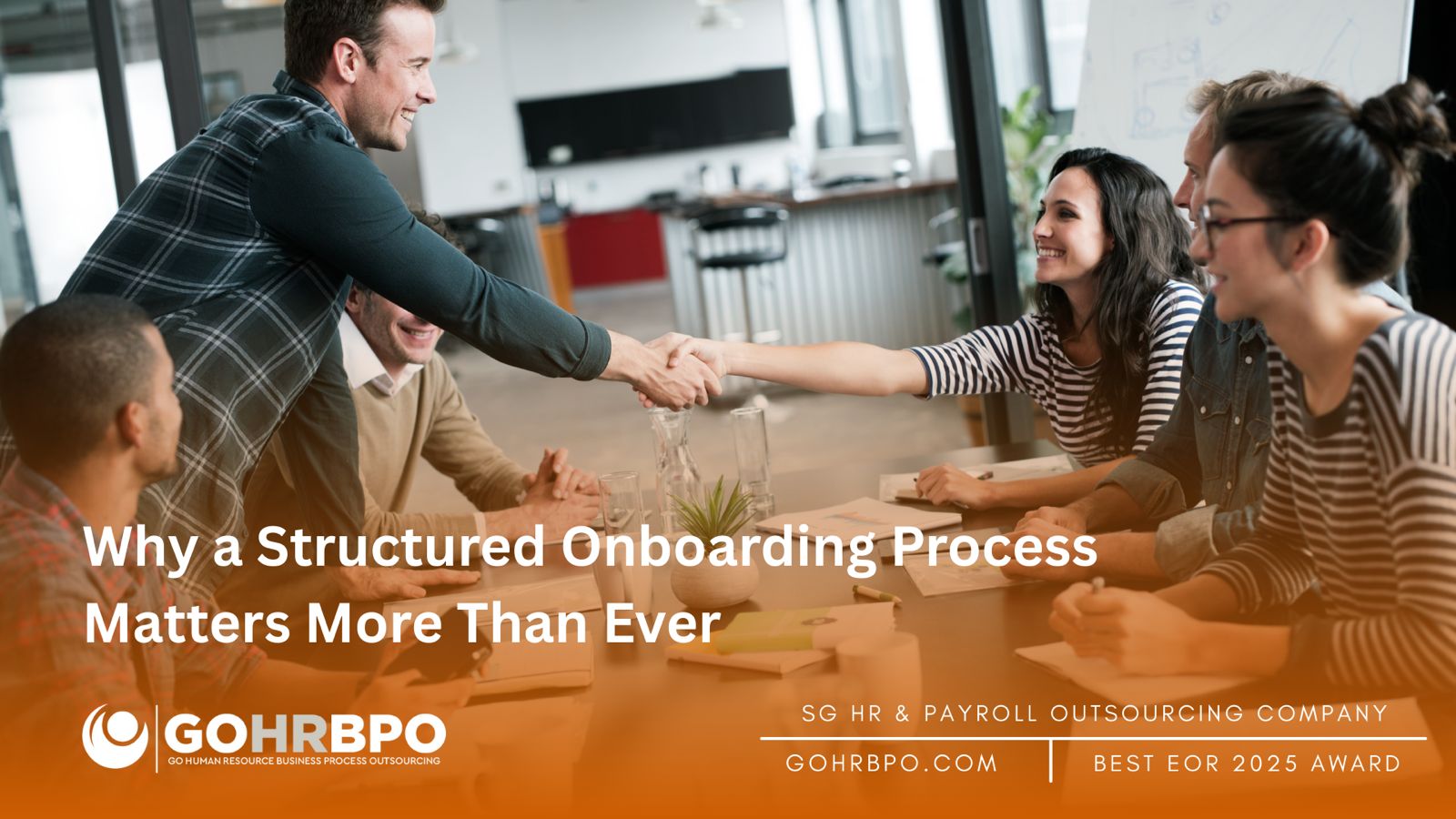Introduction
Imagine you brought in a new hire, and they resigned even before their probation ended. It’s frustrating, right? But sadly, this is a reality for many businesses.
Studies show that nearly one in three employees leave within 90 days when onboarding is not structured.
And if we talk about SMEs in Singapore, the impact can be even more painful. If your hire resigns within 90 days, it does not only mean that you lost talent.
Poor onboarding can lead to CPF miscalculations, MOM compliance risks, payroll disputes, and waste a lot of HR time.
In 2025, onboarding has become a compliance safeguard, a productivity accelerator, and a retention strategy rolled into one.
The way you structure those first weeks of onboarding can determine if your new hire is going to stay or leave.
The Risks of Poor Onboarding
- Compliance gaps: Missing CPF registration, late IRAS tax forms, or incomplete MOM records.
- Payroll errors: There is a possibility of Incorrect CPF rates, or miscalculated tax codes and allowances.
- Lost productivity: When your own onboarding process is not small, your new hires have to wait for weeks for their access to instructions or training.
- Early attrition: 30% of employees quit in the first 90 days if onboarding is weak.
- Employee disengagement: When new hires don’t like the culture and are unable to fit in, their morale drops fast, and so does the commitment.
Also Read: AI Chatbot Trends: What’s Next for Intelligent Conversations?
Impact of Poor Vs Structured Onboarding
| Metric | Poor Onboarding | Structured Onboarding |
| New-hire retention | -33% after 90 days | +82% retention improvement |
| Time to full productivity | 3–6 months | 1–2 months faster |
| Payroll error likelihood | High | Near zero |
| HR time spent weekly | 10–12 hrs manual | 40% reduction via automation |
Why Structured Onboarding Matters?
Let’s have a look at a few reasons why structured onboarding matters:
Compliance and Payroll Accuracy
The new hires need to be properly set up in the payroll and compliance system from their first day. Structured onboarding process, makes sure of:
- Setting up CPF contributions at the correct rates
- Filing IR8A/IR21 deadlines within time.
- Capturing MOM employment records without missing any details and accurately.
For instance, one SME in Singapore moved its onboarding online using HR software, and they reported zero CPF mistakes in their first year. This means they have to worry about no penalty risk and no payroll disputes.
Faster Time-to-Productivity
Structured onboarding also includes 30-60-90 day training plans that remove those lost weeks, where new hires have to sit and wait for direction.
Research shows that when you give people a clear roadmap, they become 60 to 70% more productive.
A Fortune 500 telecom implemented a 12-week structured onboarding program. Because of that, increase their sales quota attainment by 20%.
Engagement and Retention
For a new employee, onboarding is the first real experience of the company culture. When you have Mentos buddy programs and cultural orientation for the new hires, you are building loyalty.
Employees who experience a positive onboarding are 2.6 times more likely to stay engaged.
For example, Kimly Construction in Singapore reduced its attrition from 25%-18% after assigning buddies to guide their new hires through their first six months.
Efficiency and Cost Savings
SMEs often don’t realise how expensive weak onboarding gets:
- Replacing one lost employee can cost around 6 to 9 months of their salary, which is a huge loss for smaller businesses.
- Digital onboarding tools like e-signature and automated forms free up a lot of time for HR.
- Integrated onboarding makes life easier for payroll outsourcing partners. It sends them clean and accurate data so that there are no more disputes or costly rework.
Cost of Weak Vs Strong Onboarding
| Factor | Weak Onboarding | Strong Onboarding |
| Average turnover cost | 6–9 months’ salary | Greatly reduced |
| Payroll disputes | Frequent | Rare |
| HR admin workload | High (manual paperwork) | Lower (automation) |
| ROI | Negative (lost hires) | Positive within 1 year |
Also Read: How to Use AI in Employee Onboarding: 7 Key Use Cases to Drive Success
What a Strong Onboarding Process Looks Like
Here is the checklist I have mentioned for SMEs:
- Pre-boarding: Make sure you send contracts, CPF forms, and benefits details before Day 1.
- Day-1 orientation: When it’s the first day of your new hire, use the first day to tell them about the company culture and introduce them to everybody in the office. You can also do a compliance briefing after that.
- Role-specific training: then make sure you are giving them proper role-specific training. You can share 30-60-90 day goals with them so that they have a clear understanding of the milestones they have to reach.
- Buddy/mentor system: A new hire is unaware of everything about your team. Always assign someone experienced to them who can answer their questions and guide them through their first few months.
- Check-ins: Schedule regular manager reviews. Regular check-ins, like every week, every 30 days, or every few months, will help you figure out any issues that are there early and also help you keep progress on track.
Conclusion
For SMEs in Singapore, structured onboarding is something you really need. It keeps CPF and IRAS work accurate and makes them stay.
Onboarding is your first chance to show a new employee that your company is reliable and people-focused.
If your HR team or payroll partner does not help you in this way, then it might be responsible for the mistakes and your hires leaving too soon. You need to consider shifting to a partner who helps you with all of this.
Because at the end of the day, onboarding means building trust and making sure you set up your business to achieve all the heights right from day one.






